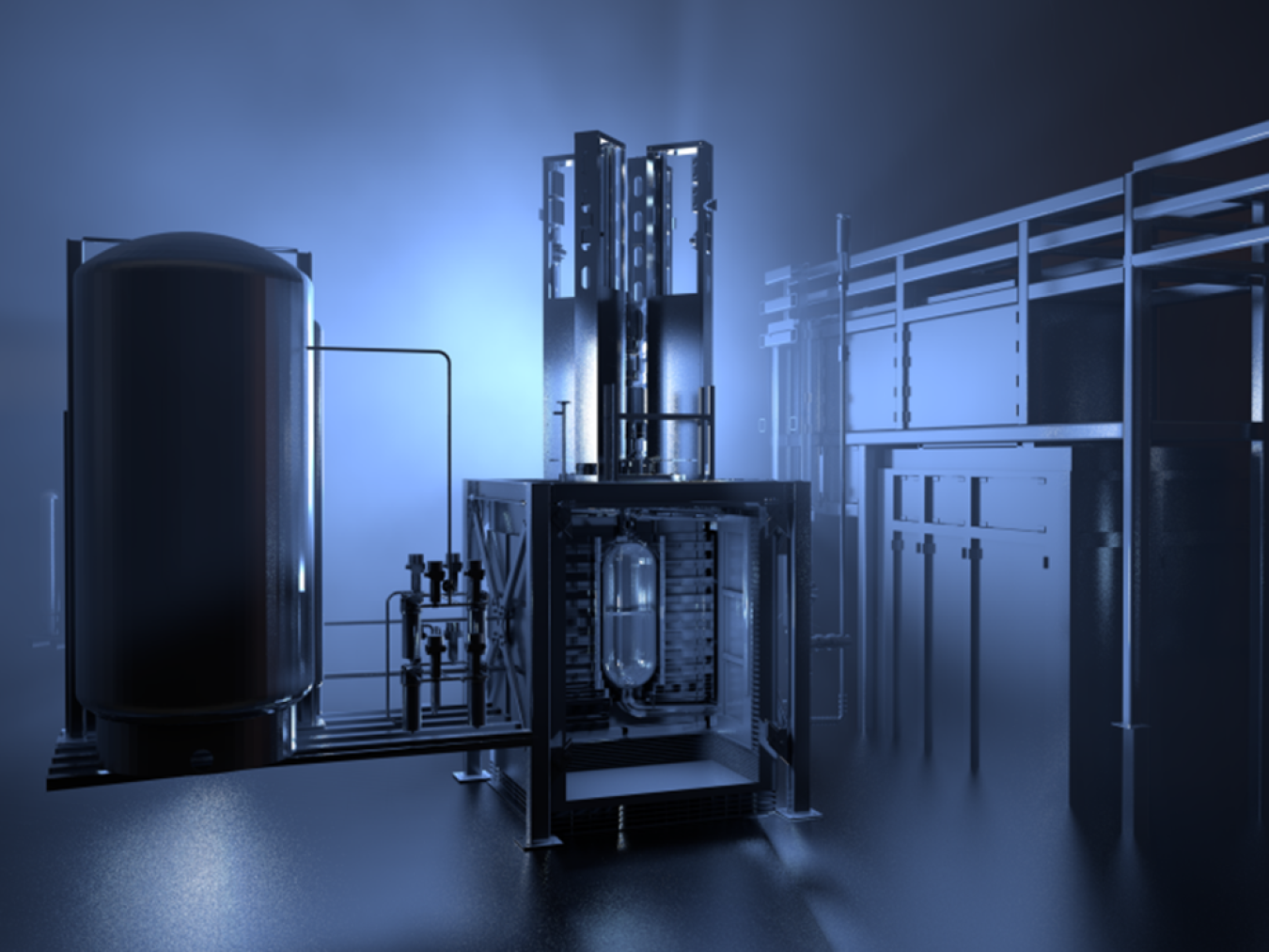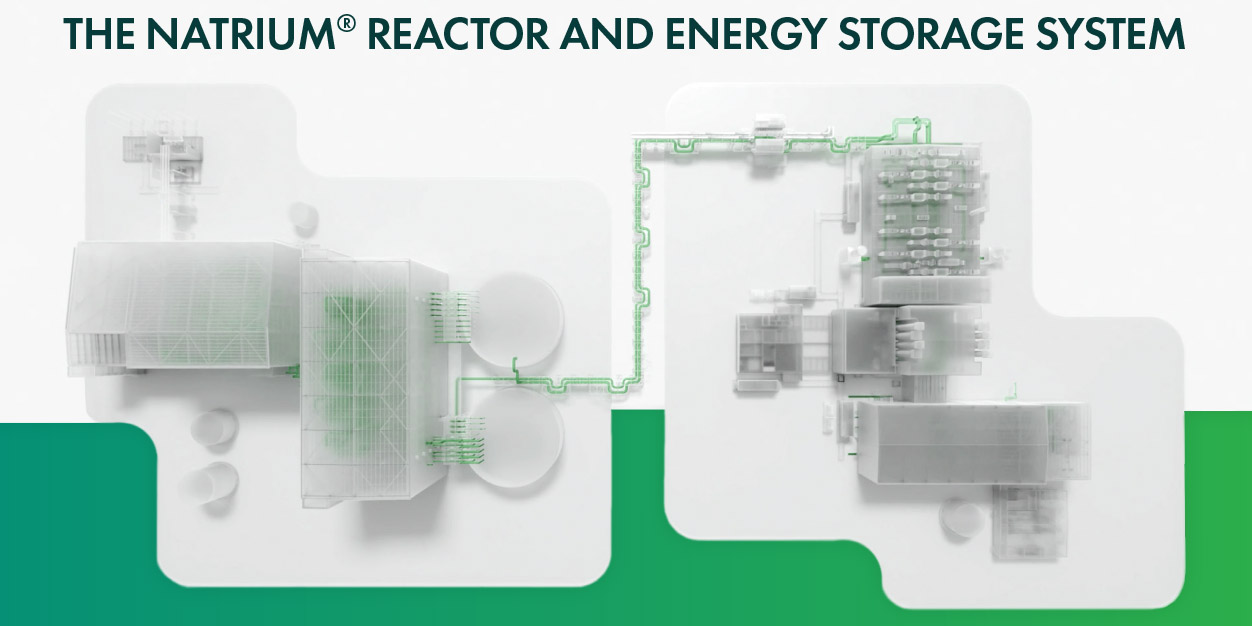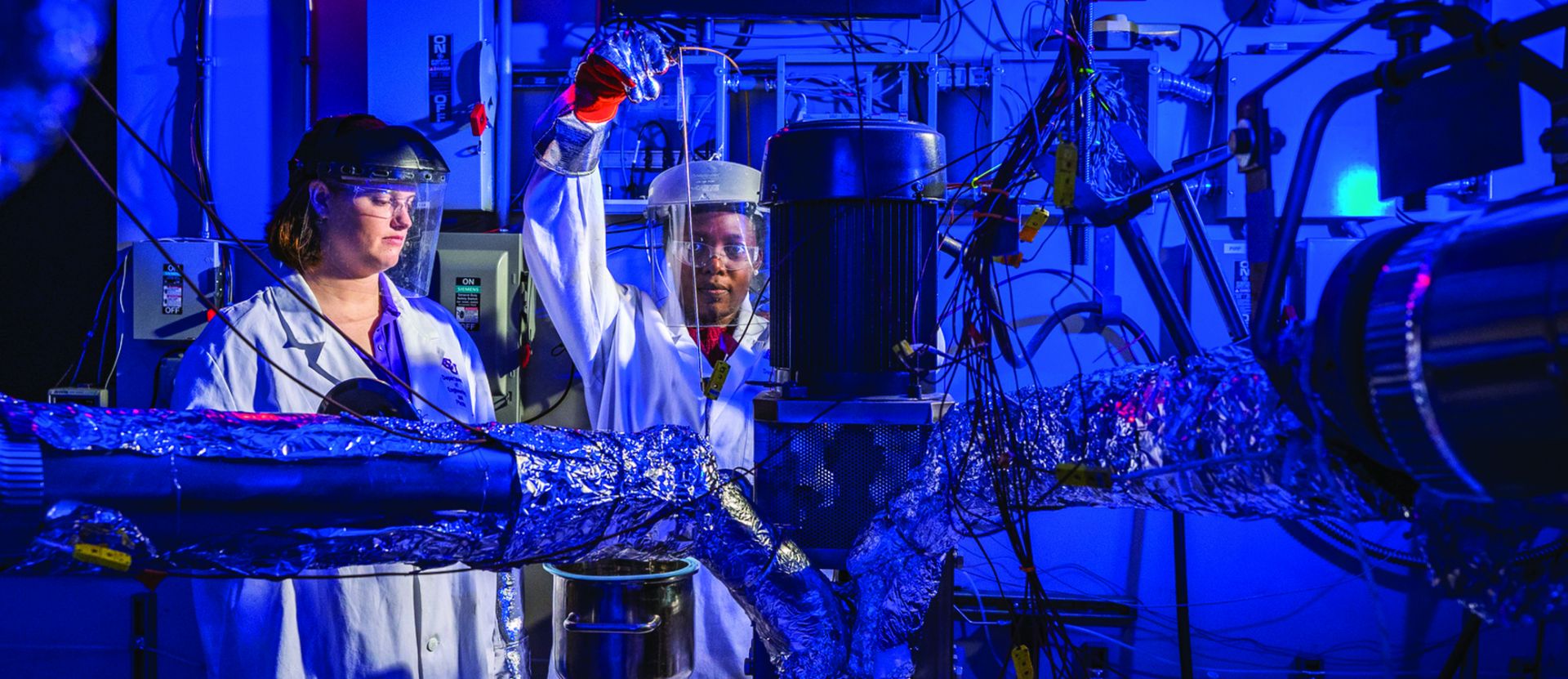Rendering of MCRE. (Image: INL)
Idaho National Laboratory has announced the creation of the first batch of enriched uranium chloride fuel salt for the Molten Chloride Reactor Experiment (MCRE). INL said that its fuel production team delivered the first fuel salt batch at the end of September, and it intends to produce four additional batches by March 2026. MCRE will require a total of 72–75 batches of fuel salt for the reactor to go critical.
A schematic diagram of the Shaft Seal Test Facility. (Image: NERS)
For 2,300 hours, the molten salt pump Shaft Seal Test Facility (SSTF) operated at the University of Michigan’s Thermal Hydraulics Laboratory, according to an article from UM. The large-scale experiment was designed to evaluate shaft seal performance in high-temperature pump systems. Fewer than 10 facilities worldwide have successfully operated fluoride or chloride salts for more than 100 hours using over 10 kilograms of material.
Principal investigator Ruchi Gakhar (left), technician Dean Burt (center), and intern Diego Macias, shown loading salt into the loop. (Photo: INL)
The Department of Energy announced March 31 that a new Molten Salt Flow Loop Test Bed at Idaho National Laboratory recently went through its inaugural test run. The closed-loop test system will allow for continuous monitoring and analysis of chloride-based molten salt reactor technology and instruments before the construction of the Southern Company/TerraPower Molten Chloride Reactor Experiment. MCRE—an experimental fast-spectrum molten salt research reactor—will be built at INL’s repurposed Zero Power Physics Reactor, which has been renamed LOTUS (Laboratory for Operation and Testing in the United States).
Research engineers take a sample of molten salt for the NEXT Lab. (Photo: Jeremy Enlow/Steelshutter)
The American Nuclear Society’s Chicago–Great Lakes Local Section hosted a presentation on February 27 on developments at the molten salt research reactor at Abilene Christian University’s Nuclear Energy Experimental Testing (NEXT) Lab.
A recording of the presentation is available on the ANS website.
A glass test cell that was fabricated to visualize noble gas behavior in a stagnant molten salt column. (Photo: ORNL)
Transparency is one advantage of certain molten salts that could serve as both a coolant and fuel carrier in an advanced reactor. For scientists studying molten salt chemistry and behavior at the laboratory scale, it helps if the test vessel is transparent too. Now, Oak Ridge National Laboratory has created a custom glass test cell with a 1-liter capacity to observe how gases move within a column of molten salt, the Department of Energy announced August 5.
A rendition of Terrestrial Energy’s IMSR. (Image: NRC)
The Canadian Nuclear Safety Commission (CNSC) has completed phase two of its prelicensing vendor design review for Terrestrial Energy’s Integral Molten Salt Reactor (IMSR), the Ontario-based advanced nuclear technology firm announced Tuesday. Phase one of the VDR commenced in April 2016 and was completed in November of the following year.
Researchers are looking for the ideal characteristics of molten salt, which can serve as both coolant and fuel in advanced nuclear reactors. (Photo: Argonne National Laboratory)
Scientists are searching for new materials to advance the next generation of nuclear power plants. In a recent study, researchers at the Department of Energy’s Argonne National Laboratory showed how artificial intelligence could help pinpoint the right types of molten salts, a key component for advanced nuclear reactors.
Building instrumentation and control technologies into the design of the next generation of advanced nuclear reactors will help the industry meet zero-carbon-emissions goals.
December 23, 2021, 3:00PMNuclear NewsAlexander Heifetz, Matthew Weathered, Nathan Hoyt, Mark Anderson, Scott Sanders, Anthonie Cilliers Kairos Power’s Instrumentation Test Unit
As a source of carbon-free electricity, nuclear energy currently dominates in the United States. However, the light water reactors in the U.S. are approaching the end of their licensed service lives. Meanwhile, low-cost electricity generated by fossil fuel–based sources (such as natural gas) poses an ongoing challenge to the economic viability of commercial nuclear reactors. To enhance the competitiveness of the nuclear industry, we need to bring down the high operating and maintenance (O&M) costs through savings available from utilizing modern, efficient sensing and automation technologies.
Artist’s rendering of the MMR project. (Image: USNC)
Global First Power’s (GFP) Micro Modular Reactor (MMR) project has moved to the formal license review phase with the Canadian Nuclear Safety Commission (CNSC), becoming the first small modular reactor to do so.
















